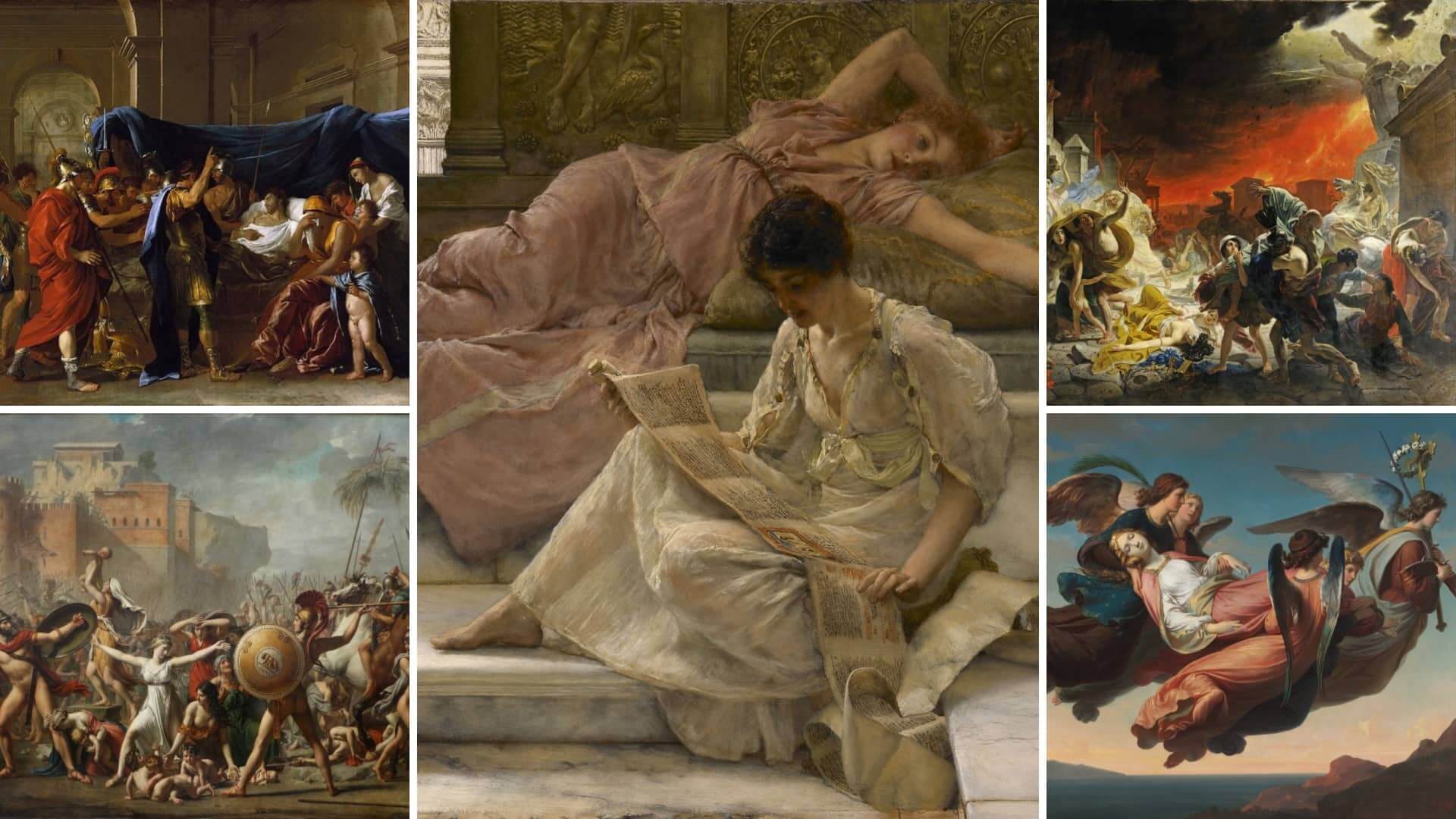Classicism is an important term to understand for anybody interested in art – but what is classicism art? We’re going to answer that question by looking at the classicism definition, as well as some classical art examples from a variety of different historical periods. By the end, you’ll be able to recognize and appreciate classicism art and how to replicate its style.
When Did Classicism Start?
First, let’s define classicism
To being our understanding of classicism in art, we need to go back to Ancient Rome and Greece. Here we find the origination of Western traditions related to art, religion, philosophy, and more. For fine art, this where the standards were set for the quality and function of great art. For more, check out our index of art styles covering more specific and noteworthy movements.
Now, let’s formally define classicism and then we'll explore the history and legacy of these forms that continue today.
CLASSICISM DEFINITION
What is classicism?
Classicism is a term used to describe art that replicates the style of classical antiquity found in Roman/Greek paintings, writings, sculptures, plays, architectural designs, and other forms. To clarify, this isn't the artistic works from the Greek and Roman empires. This is art produced afterward in the same styles. There have been a number of revivals of this style over the centuries, including neoclassicism.
Principles of Classicism Art:
- Follows the aesthetics of classic Greek and Roman art
- Upholds those aesthetics as the ideal
- Includes fine art, architecture, theatre
Having established our classicism definition, let’s quickly go over the difference between classicism vs neoclassicism.
Classicism is simply the classical style of Roman and Greek art.
Neoclassicism refers to the period in the late-18th to early-19th century in which prominent artists around the globe sought to revive the classical style of Roman and Greek art.
Essentially, neoclassicism was specific era when classicism was revived. But it wasn’t the only one.
Classicism began in earnest during the Middle Ages and exploded in popularity during the Age of Enlightenment. Then, it persisted through other flash points in history leading up to the current day.
For more on the big ideas behind classicism, check out the video below.
Classicism Definition Explained
With our definition and history covered, let's dive into the principles of classicism and how we might begin to recognize its style.
Classicism Examples
Examining the classicism style
Classicism is defined by the style of ancient Greek/Roman art. Let’s check out a few different types of classical art to see the term’s defining features.
ARCHITECTURE
Classical architecture is rooted in simple grandeur. This included wide structures, large columns, and elegant designs. Architectural masterworks from the period of classical antiquity were sleek, not gaudy. They called attention themselves; not for their decor, but rather their indomitable form.
For more on the foundations of classical architecture, check out this absolutely incredible documentary from ClassicistORG.
Classicism Architecture • The Foundations of Classical Architecture: Roman Classicism
So: when you think of classical architecture, think stone, columns, and geometry. Classical architecture is still popular today, most commonly in governmental buildings. Take the Pasadena City Hall for example:
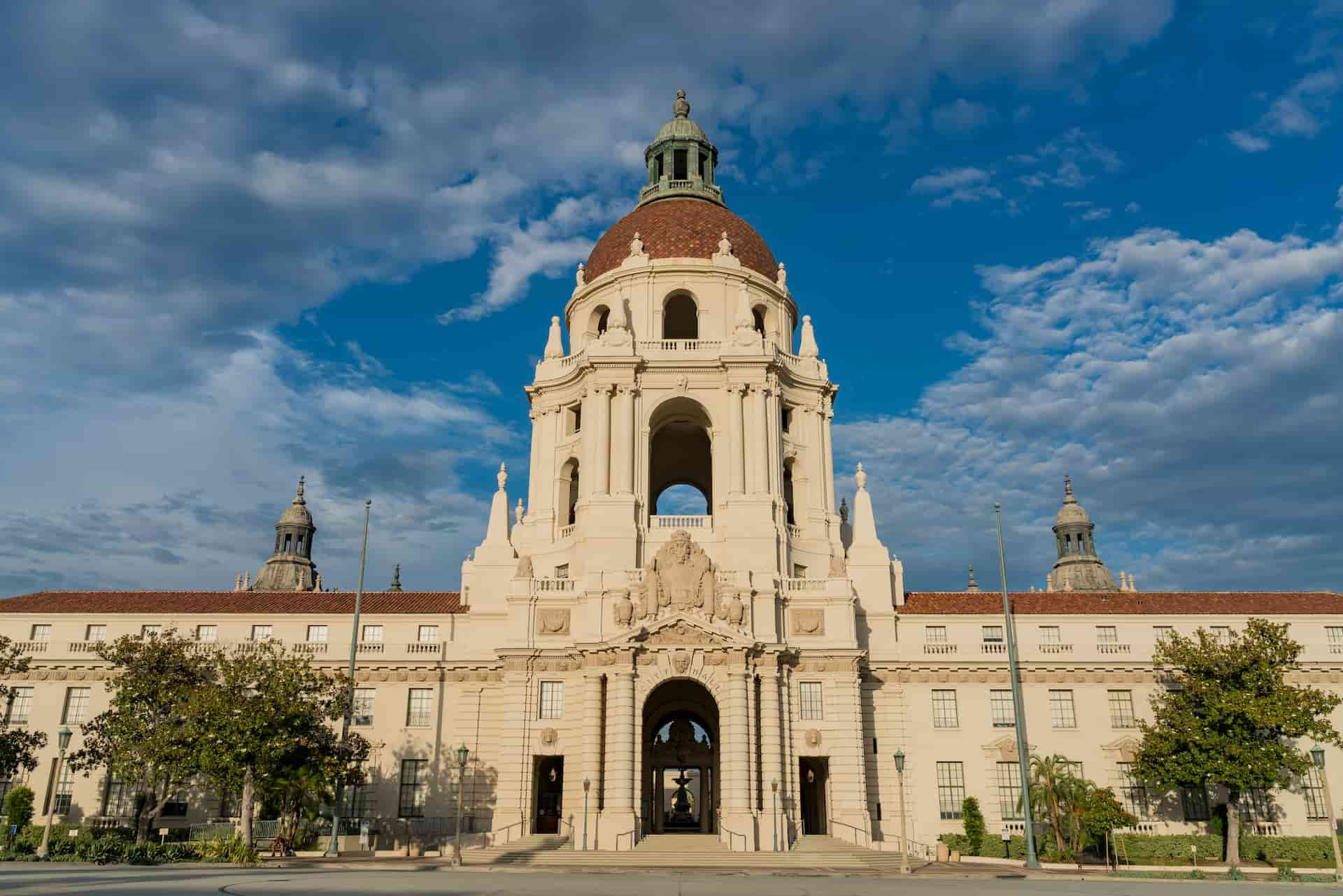
What is Classicism? • Photo of Pasadena City Hall via Wikipedia
The Pasadena City Hall takes obvious inspiration from classical architecture – and elements from the styles of baroque, gothic, and Beaux-Arts as well.
SCULPTURES
Sculpting was an incredibly popular art form in the era of classical antiquity. During the classical era, sculpting, painting, and writing were the only art forms that could be done without outside help.
Theater required an audience. Opera required an audience. But sculpting, painting, and writing didn’t. We’ll get to the other classical forms in a bit. But first, let’s take a look at how classical sculptures were (and still are) produced.
Principles of Classicism • Where the Marble for Classic Sculptures Comes From
It’s worth noting that there’s a pretty big difference between the styles of ancient Greek and Roman sculptures. Heck, there’s a big difference between the styles of ancient Greek sculptures from period to period.
Scholars could probably write a thousand pages on the difference between sculptures in the archaic, classical, and Hellenistic periods. But we’re going to keep it simple.
Perhaps the biggest difference between Greek and Roman sculptures – at least conceptually – is that the former focused on an idealized human form while the latter focused more on realistic figures. Of course, this wasn’t universally true, but most scholars agree that it was significant.
One of the most famous sculptures from the Greek Hellenistic period was Venus de Milo, featured below.
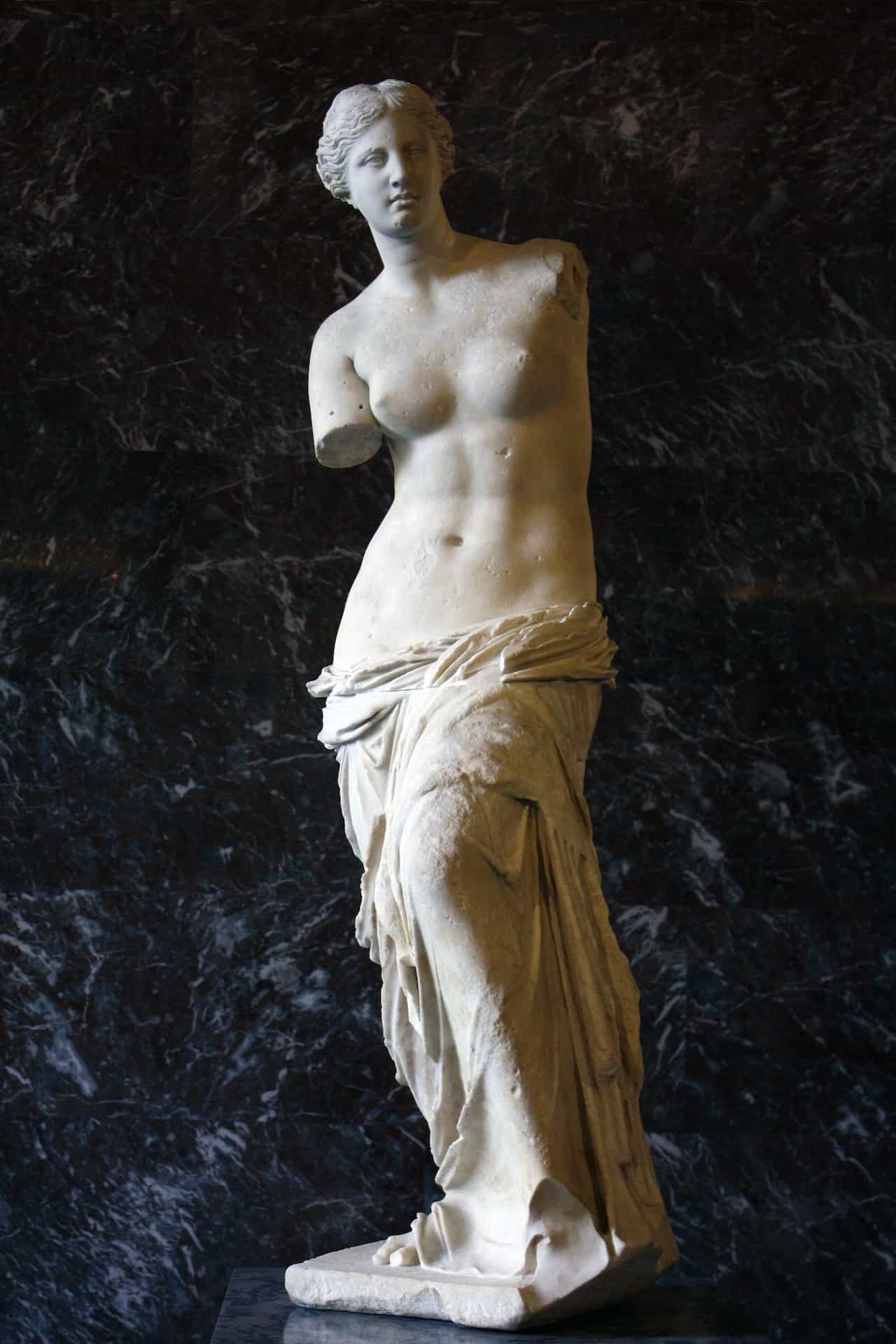
Classicism Artists • Venus de Milo by Alexandros of Antioch ~150-125 BC
Venus de Milo is noted for its timeless form. The Greek Goddess was sculpted with a chiseled midsection and draped in a falling rag. Some contemporary critics suggest that the sculpture was also significant for how it might represent atypical beauty.
The subject’s body is balanced but noticeably off-center – so as to suggest a potential curvature of the spine.
In Rome, sculptures were generally more “realistic.” This statue of Augustus of Prima Porta is noticeably more lifelike.
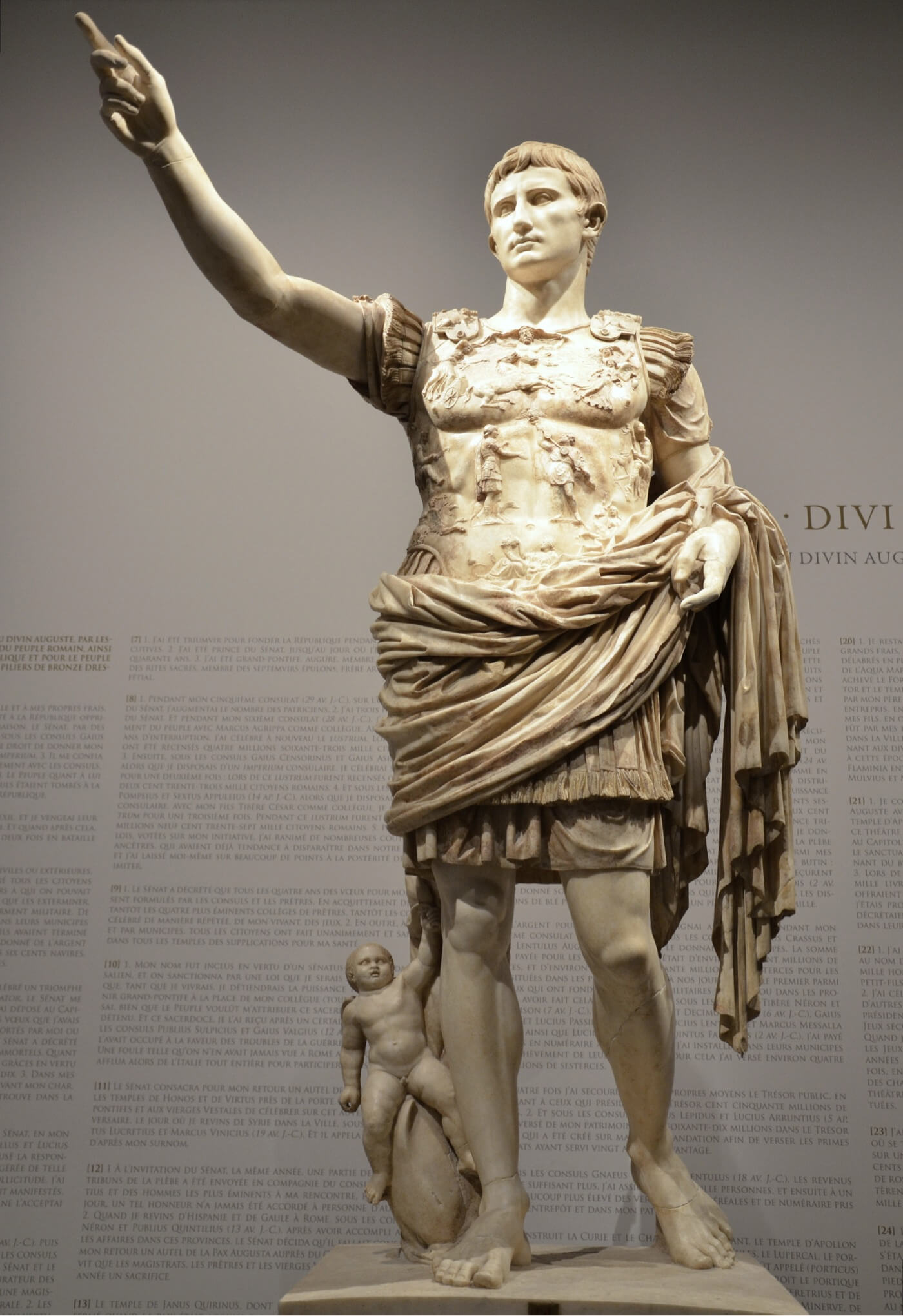
What is Classicism? • Augustus of Prima Porta by Artists Unknown
But still, the Romans couldn’t help but ascribe theological significance to their statues. The notion of “barefooted-ness” was a motif in classical art.
Usually, the motif was reserved for depicting Gods, but satirical artists might have used it to mock the notion of divinity as well.
PAINTINGS
Classical paintings are a bit tricky to analyze because a lot of them were destroyed in fires, wars, etc. But still, there’s no denying that paintings from this era inspired artists of the Renaissance and Age of Enlightenment.
Here’s a great example:
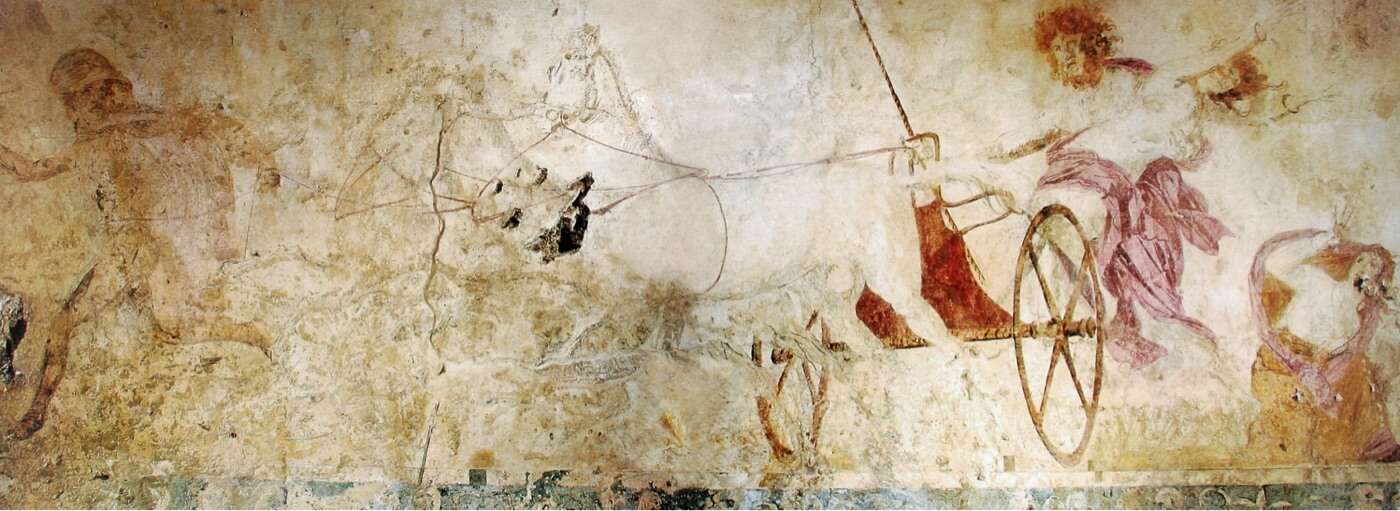
Classicism Art Pieces • Hades Abducting Persephone by Artists Unknown, 4th Century B.C.
Hades Abducting Persephone was discovered during excavation into an aristocratic tomb in Macedonia. The fresco is significant for its mythological subject matter and prescient representation of motion in form.
Renaissance artists often replicated the mythological subject matter and motioned-form of classical art. Take Michelangelo’s masterwork, The Creation of Adam for example:
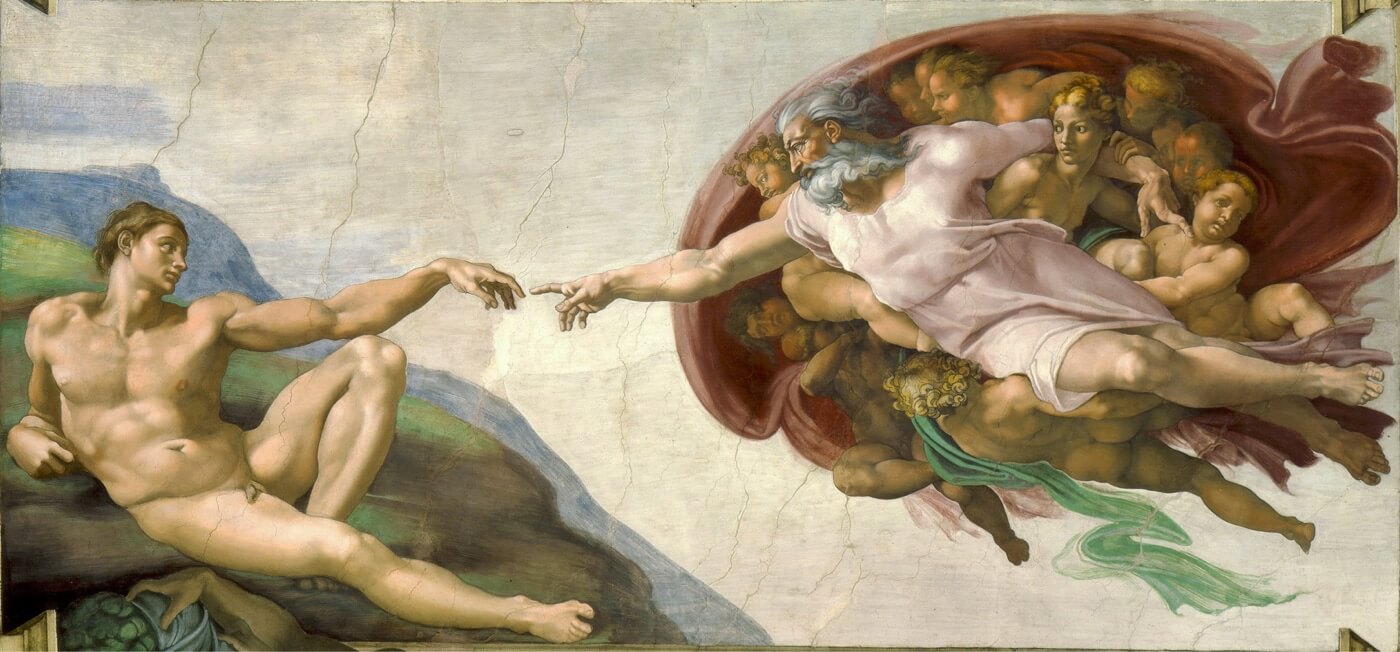
Classicism Paintings • The Creation of Adam by Michelangelo, 1512 AD
Mythological subject matter and motioned-form aren’t exclusive to classical paintings. But through them, we can draw explicit correlation between the era of antiquity and the Renaissance.
WRITING & PHILOSOPHY
As far as ancient Greece and Rome are concerned, writing and philosophy go together like two peas in a pod. In the era of classical antiquity, only the most highly-educated individuals could read and write.
So, it was up to these “lovers of wisdom” – otherwise known as philosophers – to spread information to the masses.
Philosophers like Socrates espoused their beliefs in the public square. Subsequent philosophers, such as Plato and Aristotle, pontificated in public like Socrates (depicted in the painting below by the Renaissance painter Raphael). But they also wrote about their beliefs and distributed their writings to other educated individuals.
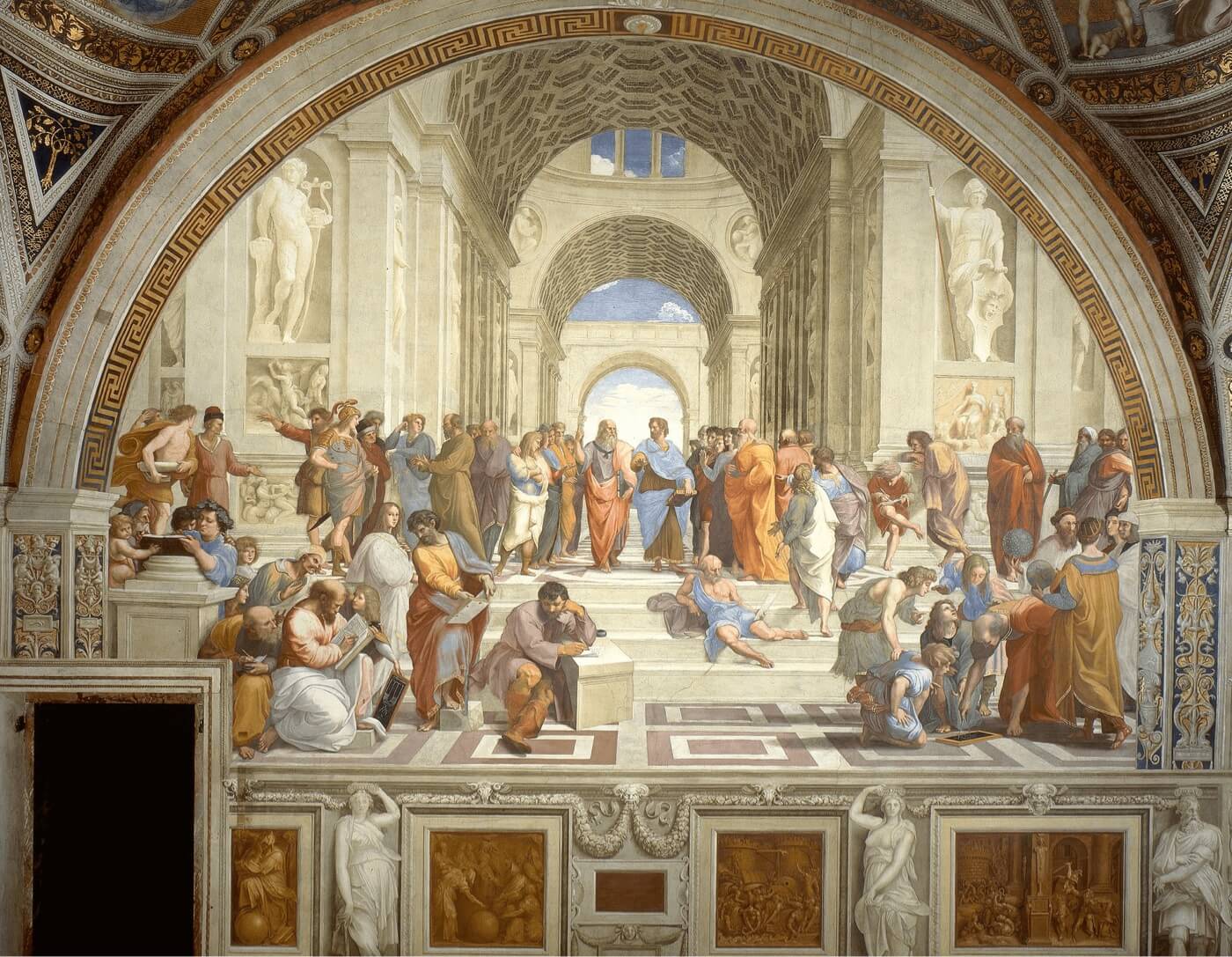
Classicism Era • The School of Athens by Raphael, 1509-1511 AD
The teachings of classical philosophers (through oral tradition and transcription) spread across trade routes all over the world.
Classicists seek to return to the teachings of ancient Greece and Rome. Particularly The Republic and The Five Dialogues by Plato, Metaphysics and Politics by Aristotle, and Meditations by Marcus Aurelius.
OTHER FORMS
Classical pottery, metalworks, and theater also fall under the umbrella of classicism. Of the three, theater has perhaps the most distinct identifier, which is conformity to the “classical unities” of Aristotle’s Poetics: unity of time, unity of place, and unity of action.
This next video from Carneades.org looks at the classical unities in detail.
What is Classicism? • The Three Unities of Drama from Aristotle’s Poetics
The classical unities (although somewhat misleading) are defined as follows:
- Unity of time: a tragedy should take place within a 24-hour period.
- Unity of place: a tragedy should take place in a single location.
- Unity of action: a tragedy should have one main action.
The “classical unities” were a building-block for Greek theater. More than a millennia later, they were rediscovered, and used as a template for theater in Italy, France, and other places.
UP NEXT
Explore More Styles and Movements
This was just one of many fascinating segments of art history. There are many eras, styles, artists, and movements to discover. Let's continue our study by choosing the next stop on your way to becoming an art aficionado. Below you can visit our Art Styles Index, our Art History Timeline, or choose an individual movement.
Showcase your vision with elegant shot lists and storyboards.
Create robust and customizable shot lists. Upload images to make storyboards and slideshows.
